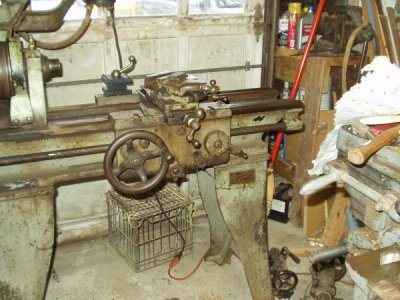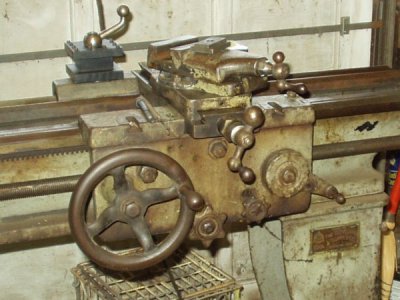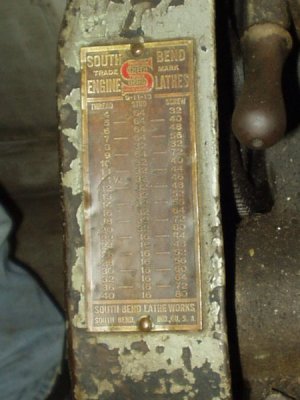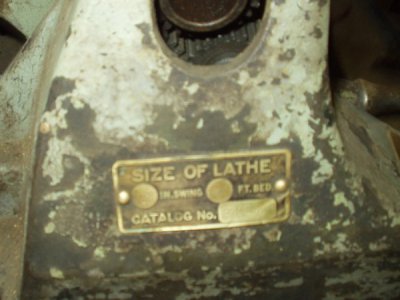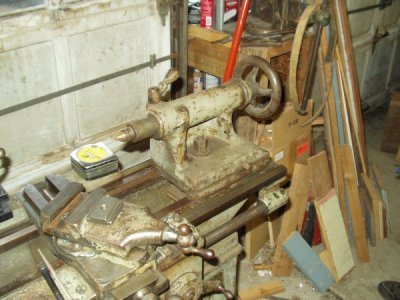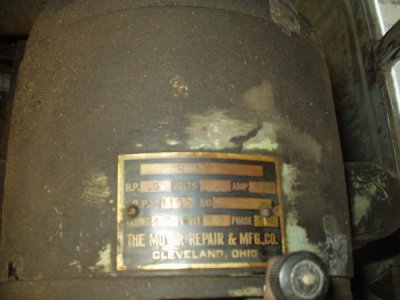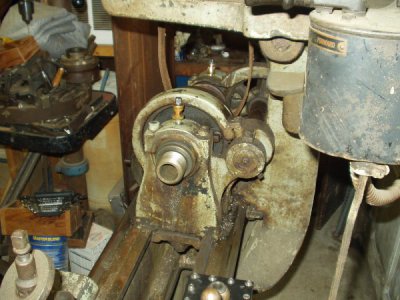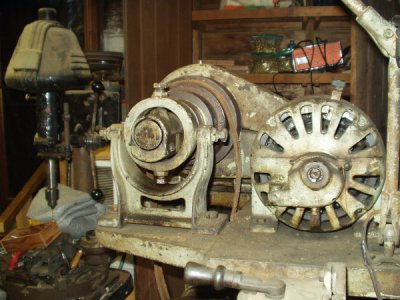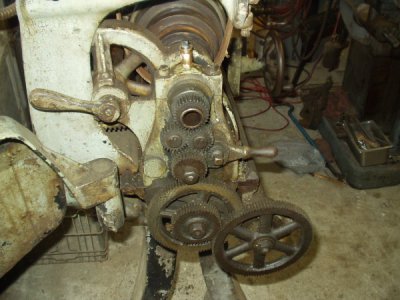Greetings,
My brother just took delivery of an old South Bend lathe. All he has been able to find out so far from tags and stampings are this. A 13" swing over the bed ways, a 4 foot bed, what seems to be a manufacturing date of 9-11-1913, Catalog #34A, and what we think may be a serial number of 21053. I know that's not much to go on, but we need to start somewhere. As soon as I am able, I will get some pix to post here. We would like to get some information to start a search for manuals, charts and such to really understand the machine.
As far as condition, he says it seems fairly tight and he has found marks from what may be original scraping on the ways. He says the spindle nose is threaded and has an OD of 1-7/8". He didn't mention the pitch of the threads. No information on the spindle bore yet.
Well, that's it for now. Pretty vague, but again, it's just a start.
Thanks ahead of time for any help.
Russ
My brother just took delivery of an old South Bend lathe. All he has been able to find out so far from tags and stampings are this. A 13" swing over the bed ways, a 4 foot bed, what seems to be a manufacturing date of 9-11-1913, Catalog #34A, and what we think may be a serial number of 21053. I know that's not much to go on, but we need to start somewhere. As soon as I am able, I will get some pix to post here. We would like to get some information to start a search for manuals, charts and such to really understand the machine.
As far as condition, he says it seems fairly tight and he has found marks from what may be original scraping on the ways. He says the spindle nose is threaded and has an OD of 1-7/8". He didn't mention the pitch of the threads. No information on the spindle bore yet.
Well, that's it for now. Pretty vague, but again, it's just a start.
Thanks ahead of time for any help.
Russ


